Welcome to an exploration of mountains Vietnam. In this article, we delve into the picturesque peaks and valleys that define Vietnam’s terrain. From the towering heights of Fansipan to the tranquil beauty of Tam Coc, discover the significance of mountains in Vietnamese culture and tourism. Join us as we uncover the hidden gems and cultural riches nestled within Vietnam’s majestic mountain ranges.
See more: Discover Exquisite Vietnam Destinations
Top 9 Mountains Vietnam
Fansipan Mountain
Fansipan, the towering pinnacle of the Indochina peninsula at 3,143 meters, sits majestically in the heart of the Hoang Lien Son range, approximately 9 kilometers southwest of Sapa town. Locally known as “Hua Xi Pan,” meaning a colossal, precarious stone slab, Fansipan holds a significant place in Vietnamese folklore.
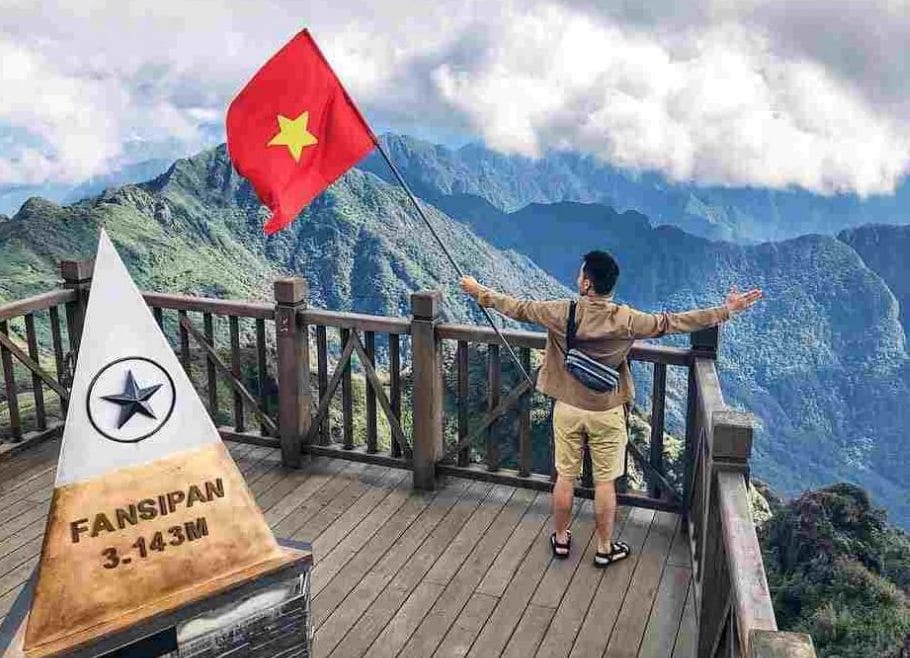
In the past, conquering Fansipan required a rigorous two-day trek. However, with the introduction of a cable car system, exploring this iconic peak has become accessible to all. Health concerns need not deter visitors from experiencing the splendor of Fansipan during their Sa Pa journey.
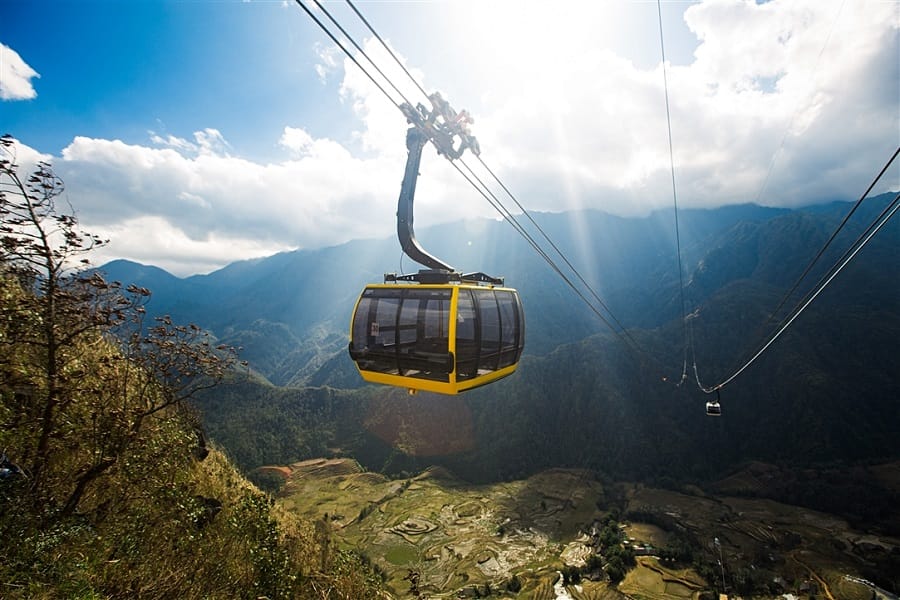
Key experiences awaiting adventurers on the cable car ascent include:
- Reveling in the panoramic vistas of the Northwest mountains and forests, traversing the dreamlike Muong Hoa Valley, the vibrant Hoang Lien National Park, and finally, the grandeur of the Hoang Lien Son range. As the altitude increases, visitors may feel transported to a fairyland, surrounded by ethereal clouds.
- Exploring the Fansipan Legend Tourist Area, home to Vietnam’s tallest bronze Buddha statue, standing at an impressive 21.5 meters and crafted from 50 tons of bronze. Additionally, spiritual landmarks such as Bich Van Thien Tu, Bodhisattva Avalokiteśvara statue, Bao Thap, and Thanh Van Dac Lo await exploration.
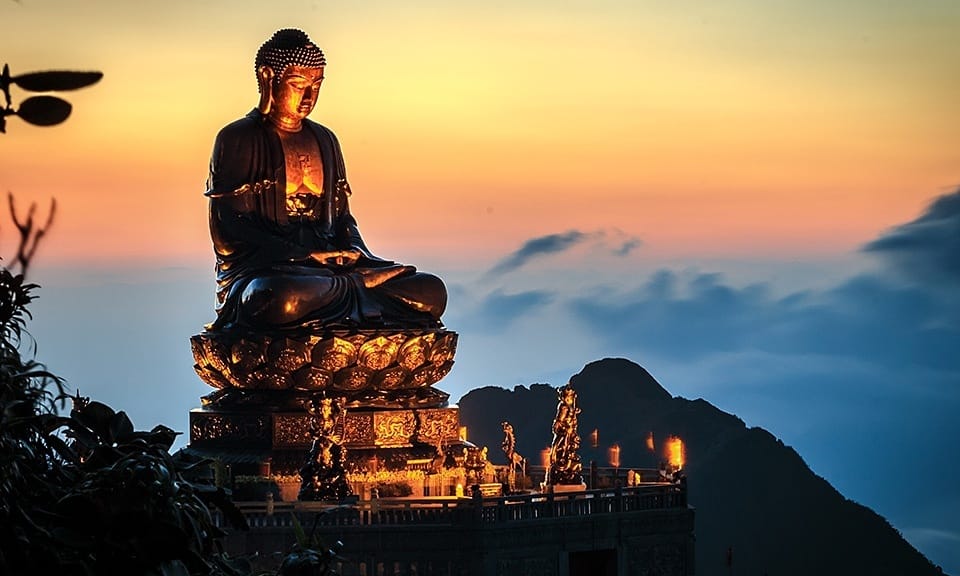
Vietnam’s tallest bronze Buddha statue, Fansipan – Source: Collected - Walking the Arhat Road, an 800-meter stretch adorned with 18 bronze statues of Arhats, each standing at 2.5 meters tall, showcasing diverse postures and expressions.
- Ascending to the summit to witness the tallest flagpole in Indochina, proudly flying a red flag with a yellow star, symbolizing Vietnamese resilience and pride.
- Touching the milestone marking “The Roof of Indochina” at the peak’s highest point, an essential rite of passage for those who conquer this majestic mountain.
Pu Si Lung Mountain
Pu Si Lung stands proudly at an altitude of 3,083 meters, nestled in Pa Ve Su commune, Muong Te district, adjacent to the Vietnam-China border, serving as a natural demarcation between the two nations. Embraced by climbers and adventurers alike, this mountain beckons with its allure of exploration.
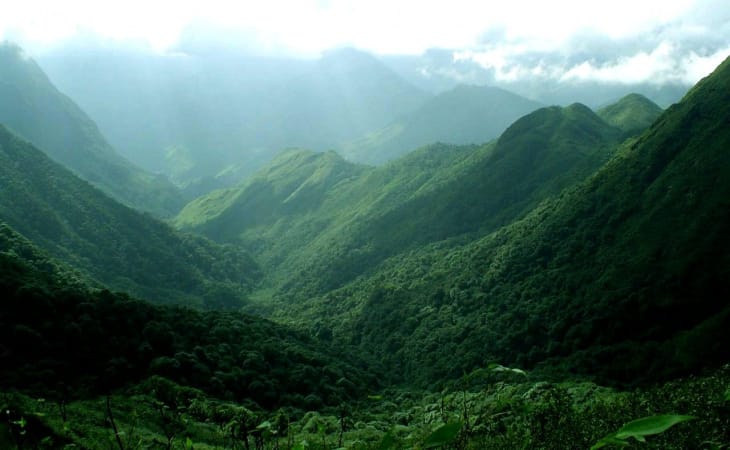
Embarking from the Pa Ve Su border post, the journey to Pu Si Lung’s summit demands a minimum of 3 nights and 4 days, traversing a rugged 100-kilometer forest trail both ways. This odyssey entails conquering mountain passes, navigating dense forests, crossing streams teeming with challenges, including treacherous rapids, jagged rocks, and makeshift bridges fashioned from fallen tree trunks. The path is fraught with slippery terrains and icy currents, necessitating utmost caution to avoid mishaps.
Key highlights not to be missed include:
- Milestone number 42, a coveted spot for travelers, perched at 2,800 meters above sea level. This landmark, crafted from marble weighing over 100 kilograms, serves as a testament to Vietnamese ingenuity and perseverance. A must-visit destination offering virtual check-in opportunities, it embodies the collective effort of the Vietnamese people.
- Unforgettable passes adorned with vibrant hues of red and yellow, characteristic of the Northwest’s untamed terrain. While perilous, these narrow trails, flanked by sheer cliffs, allure numerous tourists, albeit with caution owing to the potential hazards.
- Primeval forests, revered as treasures by highland communities, captivate with their lush greenery and abundant biodiversity. Wanderers traversing these trails are enveloped by towering ancient trees and encounter a plethora of unique flora and fauna. During the blooming season, the forest transforms into a kaleidoscope of colors, showcasing orchids, azaleas, and wild banana flowers in all their splendor.
- Nam Si Luong stream, though labeled a mere stream, rivals small rivers in size and grandeur. Its crystal-clear waters meander through verdant landscapes, offering an idyllic setting for recreation and contemplation. Encircled by verdant foliage, the stream invites visitors to savor moments of tranquility amidst nature’s embrace, leaving an indelible mark on their hearts.
Yen Tu Mountain
Nestled amidst the borderlands of Quang Ninh and Bac Giang provinces, Yen Tu Mountain boasts a commanding altitude of 1,068 meters above sea level, forming a part of the Dong Trieu mountain range. Its thriving flora and fauna ecosystem beckons adventurers seeking spiritual solace and natural beauty. Accessible via either trekking or cable car, Yen Tu Mountain is revered as a renowned spiritual sanctuary, adorned with ancient relics and revered pagodas.

Let’s explore some of its captivating attractions:
- Trinh Pagoda: Serving as a gateway to Yen Tu Mountain, Trinh Pagoda, constructed during the Later Le Dynasty, invites visitors to embark on a spiritual journey amidst its exquisitely crafted halls and statues.
- Dong Pagoda: Perched atop Yen Tu Mountain, Dong Pagoda stands as the largest bronze-cast pagoda in Asia, offering breathtaking panoramas of the surrounding landscape.
- Truc Lam Yen Tu Zen Monastery: Enveloped by the serene ambiance of the Northeast, this monastery, founded by Buddha Hoang Tran Nhan Tong, stands as a testament to Vietnamese Zen Buddhism.
- Ngoa Van Am: Nestled at an altitude of 500 meters, Ngoa Van Am Pagoda, shrouded in ethereal clouds, captivates visitors with its tranquil beauty and spiritual significance.
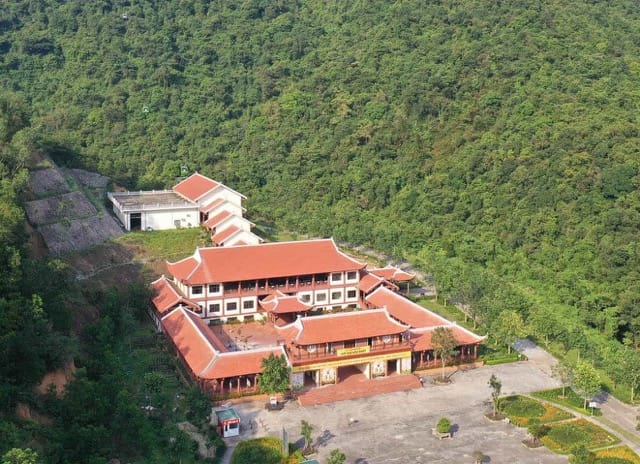
Ngoa Van Am – A Must Visit Near Yen Tu – Source: Collected - Buddha’s Gate of Heaven: A sacred site adorned with ancient inscriptions, the Buddha’s Gate of Heaven invites contemplation and reverence amidst Yen Tu’s majestic landscapes.
Ta Xua Peak
Situated in Ban Cong commune, Tram Tau district, Yen Bai province, Ta Xua Peak stands proudly at 2,865 meters above sea level, serving as the natural boundary between Yen Bai and Son La provinces. Renowned in recent years as a haven for cloud chasers and azalea enthusiasts, Ta Xua offers a unique blend of adventure and natural beauty.
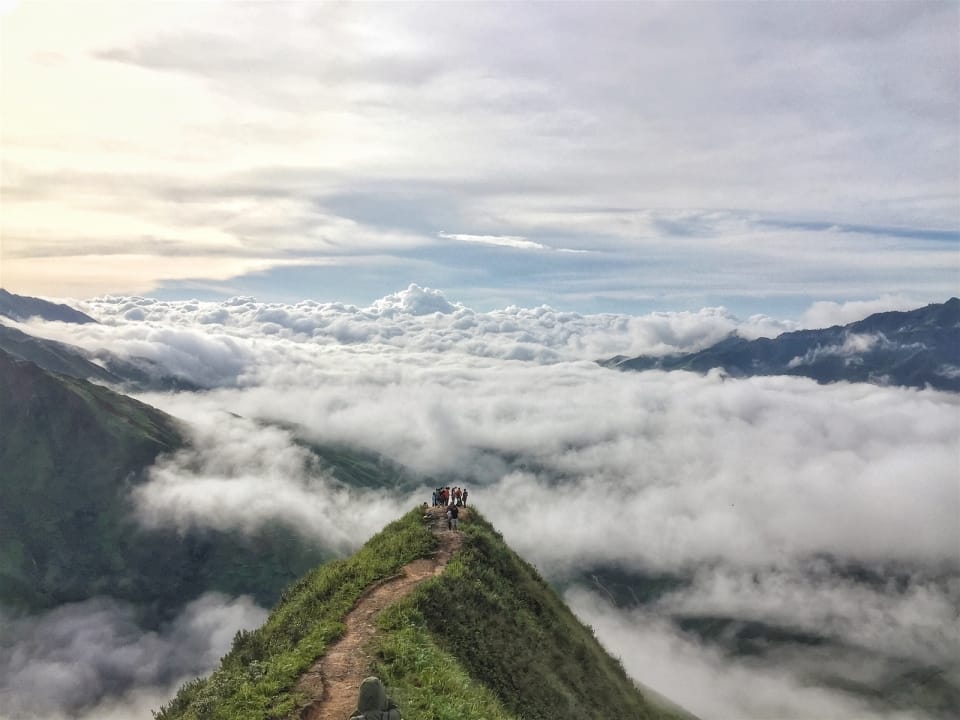
Dont miss out these destinations:
- The Dinosaur Spine: Stretching over 3 kilometers, the dinosaur spine presents the ultimate challenge for climbers. With its narrow, rocky terrain flanked by sheer abysses, this perilous yet alluring route attracts thrill-seekers from far and wide.
- Moss Forest: Near the peak, a magical moss forest envelops ancient rhododendron trees, creating an enchanting landscape unlike any other in Vietnam. Shrouded in mist, this ethereal forest exudes an otherworldly charm straight out of fairy tales.
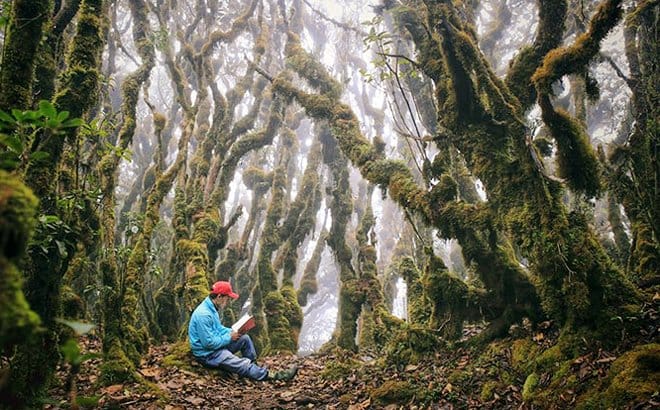
Moss Forest – Source: Collected - Ancient Rhododendron Forest: Ta Xua’s famed rhododendron forest, adorned with vibrant yellow and red blossoms, rivals the beauty of those found at Putaleng or Pusilung peaks. February to March witnesses a spectacular bloom, transforming the mountains into a kaleidoscope of colors.
Marble Mountain Vietnam
Ngu Hanh Son, situated at 81 Huyen Tran Princess Street, Hoa Hai Ward, Ngu Hanh Son District, Da Nang City, stands as a captivating scenic relic complex encompassing six limestone mountains: Tho Son, Hoa Son (comprising Duong Hoa Son and Am Hoa Son), Thuy Son, Moc Son, and Kim Son.
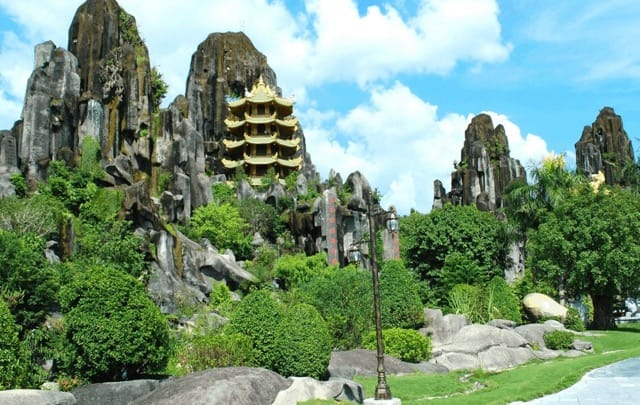
Each mountain boasts its unique charm, adorned with beautiful caves like Huyen Khong, Huyen Vi, and Van Thong, among others, drawing visitors with their mystique and allure. Despite varying in appearance and size, when viewed from afar, the mountains exhibit a striking similarity, distinguished by distinct rock colors: pink for Thuy Son, white for Moc Son, red for Hoa Son, and aqua ink for Kim Son, with Tho Son adorned in brown hues.
Tam Coc Vietnam (inside Trang An Vietnam)
Tam Coc, nestled in Ninh Hai commune, Hoa Lu district, Ninh Binh province, lies approximately 7 kilometers from the city center of Ninh Binh. Part of the Trang An complex, Tam Coc – Bich Dong tourist area was designated as a UNESCO World Cultural Heritage site in 2014 and holds the distinction of being a special national monument.
Covering an expansive area of 350.3 hectares, Tam Coc boasts a remarkable array of cave systems and limestone mountains, creating a tranquil landscape akin to a serene village painting. Within this tourist enclave lies the Bich Dong pagoda, showcasing traditional architecture and housing significant historical relics associated with the ancient Tran dynasty’s Vu Lam palace.

Embarking on a journey through Tam Coc, visitors are treated to over 2 hours of leisurely boat rides along the Ngo Dong river. Glide through verdant rice fields and limestone cliffs, while marveling at the natural splendor of the caves.
Renowned for its trio of scenic caves – Ca, Hai, and Ba – Tam Coc captivates with its majestic natural spectacle shaped by the meandering Ngo Dong river. As the river winds through rocky mountains, it creates picturesque bends and vistas. Flanked by lush green rice fields stretching into the horizon, the scene unfolds like a breathtaking natural tableau.
Each cave possesses its own distinct allure:
- Hang Ca, the largest and longest, boasts a height of up to 20 meters and a length exceeding 127 meters, adorned with intricate stalactites and stalagmites. Legend has it that Hang Ca once sheltered a fairy with flowing white hair, lending an ethereal charm to its surroundings.
- Hang Hai, situated approximately 1 kilometer beyond Hang Ca, spans over 60 meters in length. Though smaller in scale, the experience of navigating its sparkling stalactites aboard a boat promises to be equally enchanting.
- Hang Ba distinguishes itself with a lower ceiling compared to its counterparts. Yet, its allure lies in the serene natural beauty it unveils, offering visitors a glimpse into the captivating scenery of Tam Coc, Ninh Binh.
Mountains in Ha Giang Vietnam
Ha Giang, a jewel of the homeland, sits 319 kilometers from Hanoi, offering a serene yet captivating destination with vast expanses and towering mountains. Tay Con Linh peak, nestled more than 17 kilometers from the heart of Tung San commune, stands as the crown jewel of the Northeast region, boasting an elevation of 2,428 meters above sea level.
Situated in the upstream mountain range of the Chay River, west of Ha Giang province, Tay Con Linh shares borders with Tung San commune (Hoang Su Phi), Cao Bo, and Phuong Tien communes (Vi Xuyen), approximately 10 kilometers from Ha Giang city, spanning a length of 46 kilometers. Abundant in ancient, primeval forests, this region offers an unparalleled opportunity for travelers to scale its majestic peaks and delve into the untamed beauty of its wilderness.
- Chieu Lau Thi peak, also known as Kieu Lieu Ti, rises to 2,402 meters above sea level in the Tay Con Linh range, gracing the Northwest arc as the second highest peak in Ha Giang. Nestled in Tan Minh and Chien Thang villages of Ho Thau commune, Hoang Su Phi district, Chieu Lau Thi exudes timeless beauty, captivating visitors with its ever-changing hues throughout the seasons.
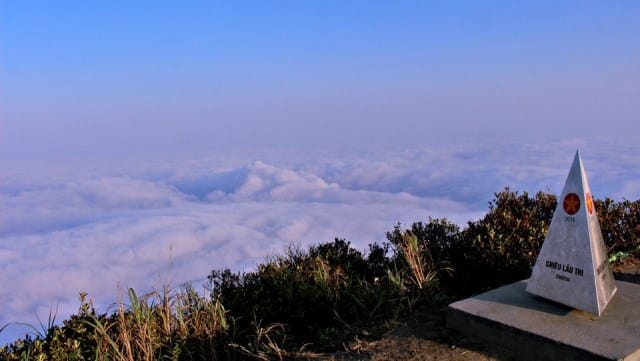
Chieu Lau Thi peak – Source: Collected - Ma Pi Leng Pass, with its treacherous 20-kilometer winding path, stands as one of the “four great passes” of the northern mountains, linking Dong Van and Meo Vac. A coveted conquest for many adventurers, the pass offers panoramic views of the verdant Nho Que River meandering through the undulating mountains, providing an ideal backdrop for picturesque photographs and wanderlust-filled adventures.
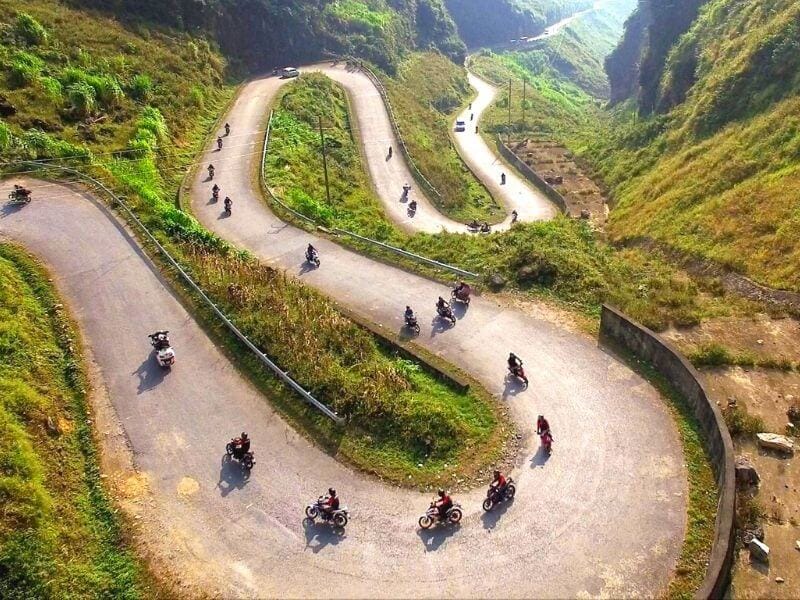
Ma Pi Leng Pass – Source: Collected - Quan Ba Twin Mountains, situated approximately 40 kilometers from Ha Giang center, grace Highway 4C in Tam Son Town, Quan Ba district. True to its name, Quan Ba Twin Mountains, also known as Co Tien Twin Mountains, resemble a nurturing mother’s breasts, symbolizing prosperity for the land. Depending on the season, visitors can admire the twin peaks adorned in various “color palettes”: the blush pink of buckwheat flowers, the golden hue of ripened rice fields, or the ethereal blue enveloped by misty morning clouds.
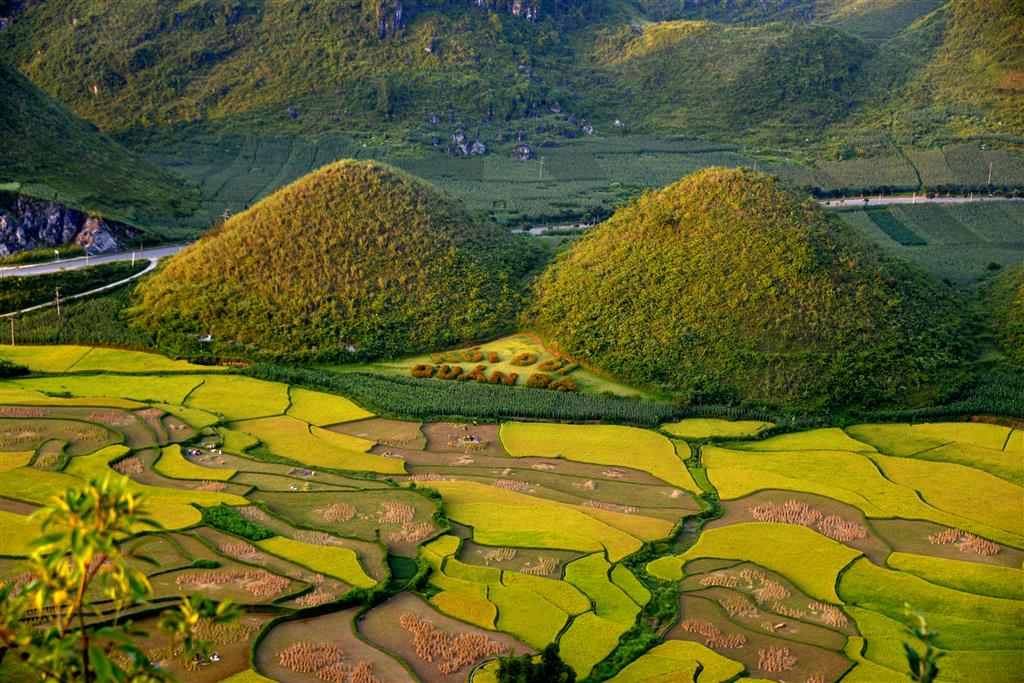
Quan Ba Twin Mountains – Source: Collected
Tam Dao Vietnam
Tam Dao, affectionately known as the rocky mountain range, sprawls across Hanoi city and three provinces: Vinh Phuc, Thai Nguyen, and Tuyen Quang. Dubbed Ba Go, or “Three Steps,” due to its distinctive trio of peaks—Thach Ban, Thien Thi, and Phu Nghia—Tam Dao stands majestically at an altitude exceeding 1000 meters above sea level, ensuring a consistently cool climate with average temperatures hovering between 18 to 20 degrees Celsius throughout the year.
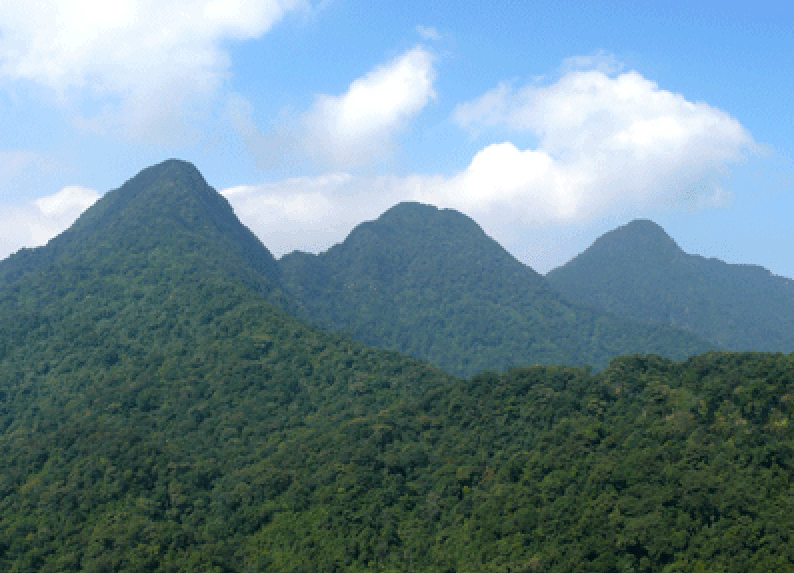
- Xa Huong Lake, initially a reservoir for agricultural purposes, has evolved into a must-visit destination for photography enthusiasts seeking captivating landscapes amidst Tam Dao’s serene surroundings.
- Tam Dao Park comes alive in the evenings, with its fountain adorned in vibrant, twinkling lights, providing a lively backdrop for bustling singing activities.
- Ba Chua Thuong Ngan Temple, steeped in thrilling anecdotes, holds significant cultural and spiritual importance, drawing visitors with its unique landscape and mystical allure.
- Tam Dao National Park, home to a plethora of wildlife and untouched natural beauty, offers an idyllic retreat for nature enthusiasts to immerse themselves in the wonders of the wilderness. Explore the park’s diverse ecosystem and encounter its inhabitants, making for a memorable adventure amidst the tranquil embrace of Tam Dao’s pristine landscapes.
Da Trang Pass (Mai Chau Vietnam)
Da Trang Pass, also known as Thung Khe Pass, graces National Highway 6, seamlessly connecting Tan Lac and Mai Chau districts of Hoa Binh province. Carved through limestone mountains during the construction of Highway 6, the pass bears witness to the remnants of this endeavor, with limestone patches adorning the landscape, imparting a picturesque white hue to the mountains and hills.
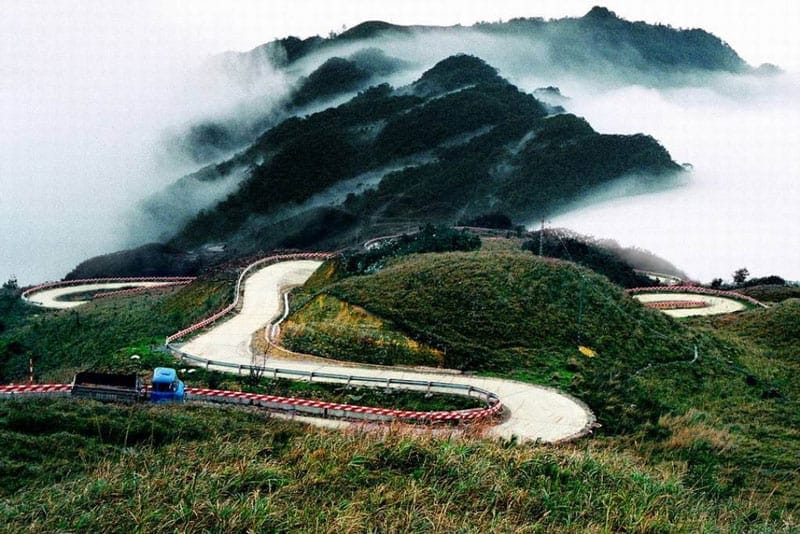
Thung Khe Pass boasts enchanting weather year-round, offering a delightful experience in every season. As the sun ascends, its first rays delicately kiss the morning dew, while at noon, the sunlight bathes the landscape in a gentle, autumnal glow, without the sweltering heat of summer. By nightfall, a crisp chill reminiscent of winter envelops the pass, completing the seasonal symphony. A must-visit check-in point for travelers bound for Mai Chau, Da Trang Pass promises unforgettable vistas and tranquil moments amidst nature’s embrace.
Conclusion
In conclusion, exploring Vietnam’s diverse mountainous landscapes offers travelers a unique blend of natural beauty, cultural exploration, and adventure. From the towering peaks of Fansipan and Tay Con Linh to the serene passes like Da Trang and Ma Pi Leng, each destination holds its own allure. Whether trekking through ancient forests or marveling at majestic caves, visitors are sure to be captivated by the charm and tranquility of Vietnam’s mountains.
Frequently Asked Questions
Q1: Is there any mountains in Vietnam?
A1: Yes, Vietnam is home to numerous mountains scattered across the country.
Q2: What is the main mountain range in Vietnam?
A2: The main mountain range in Vietnam is the Annamite Range, also known as the Truong Son Range, which runs along the border between Vietnam and Laos.
Q3: What is Vietnam’s highest mountain?
A3: Vietnam’s highest mountain is Fansipan, with an elevation of 3,147 meters above sea level. It is located in the Hoang Lien Son Range in the northwest region of Vietnam.
Q4: What are the hills in Vietnam called?
A4: The hills in Vietnam are commonly referred to as “đồi” in Vietnamese, which translates to “hills” in English. These hills contribute to the diverse topography of Vietnam’s landscape.


Related Posts
Saigon’s “Flower Market Replica”: Where To Find Them
Ho Chi Minh City’s floral charm is not limited to its bustling wholesale markets. Imagine wandering through a place where vibrant petals, fragrant blooms, and the spirit of traditional Vietnamese markets come alive—without the overwhelming crowds. A flower market replica captures that magic, blending the beauty of fresh flowers with the charm of a curated, […]
Is it Safe to Travel to Vietnam Right Now? A Complete 2025 Guide
Vietnam has emerged as one of Southeast Asia’s most captivating destinations, drawing millions of visitors annually with its rich culture, stunning landscapes, and incredible cuisine. However, many travelers still ask: Is it safe to travel to Vietnam right now? This comprehensive guide provides you with everything you need to know about Vietnam travel safety in […]
Ho Chi Minh Cu Chi Tunnels Tour: The Ultimate Guide
The Cu Chi Tunnels stand as one of Vietnam’s most remarkable historical sites, offering visitors a profound glimpse into the ingenuity and resilience displayed during the Vietnam War. For travelers, a Ho Chi Minh Cu Chi tunnels tour represents an essential experience that combines education, adventure, and deep cultural understanding. This comprehensive guide will help […]